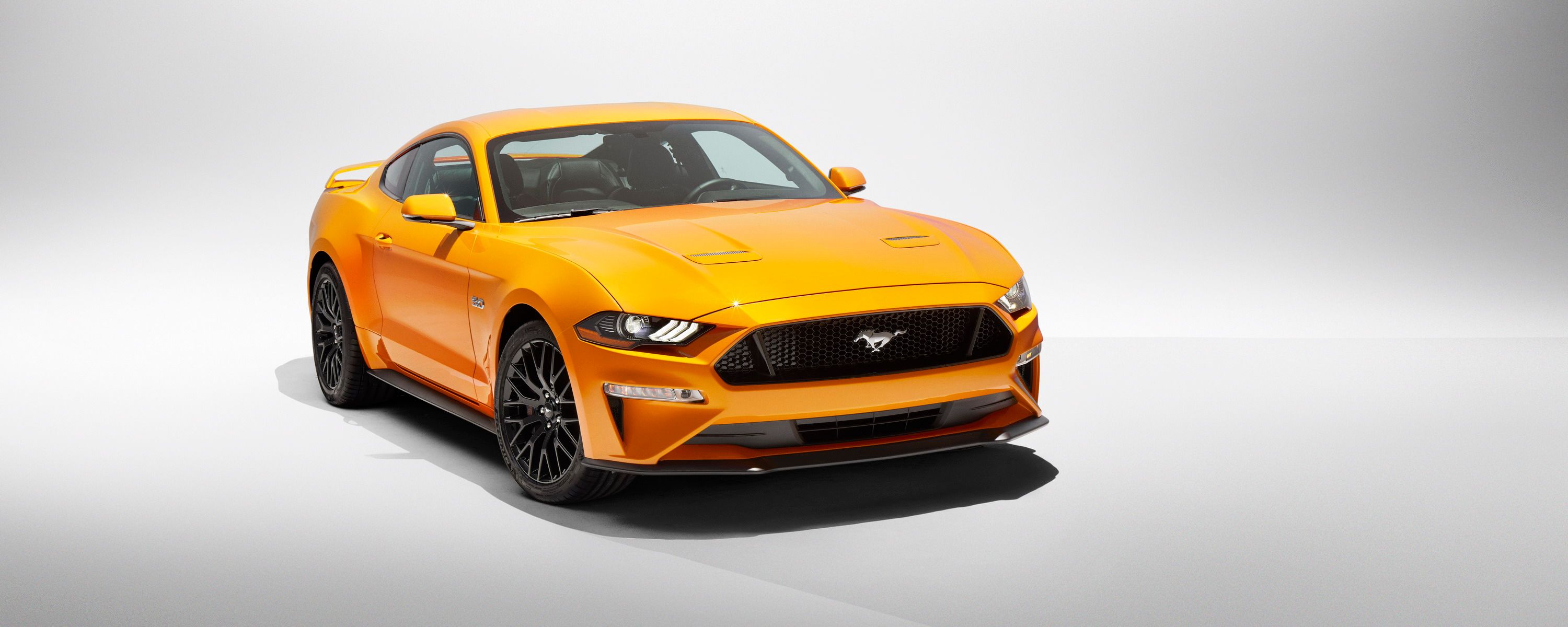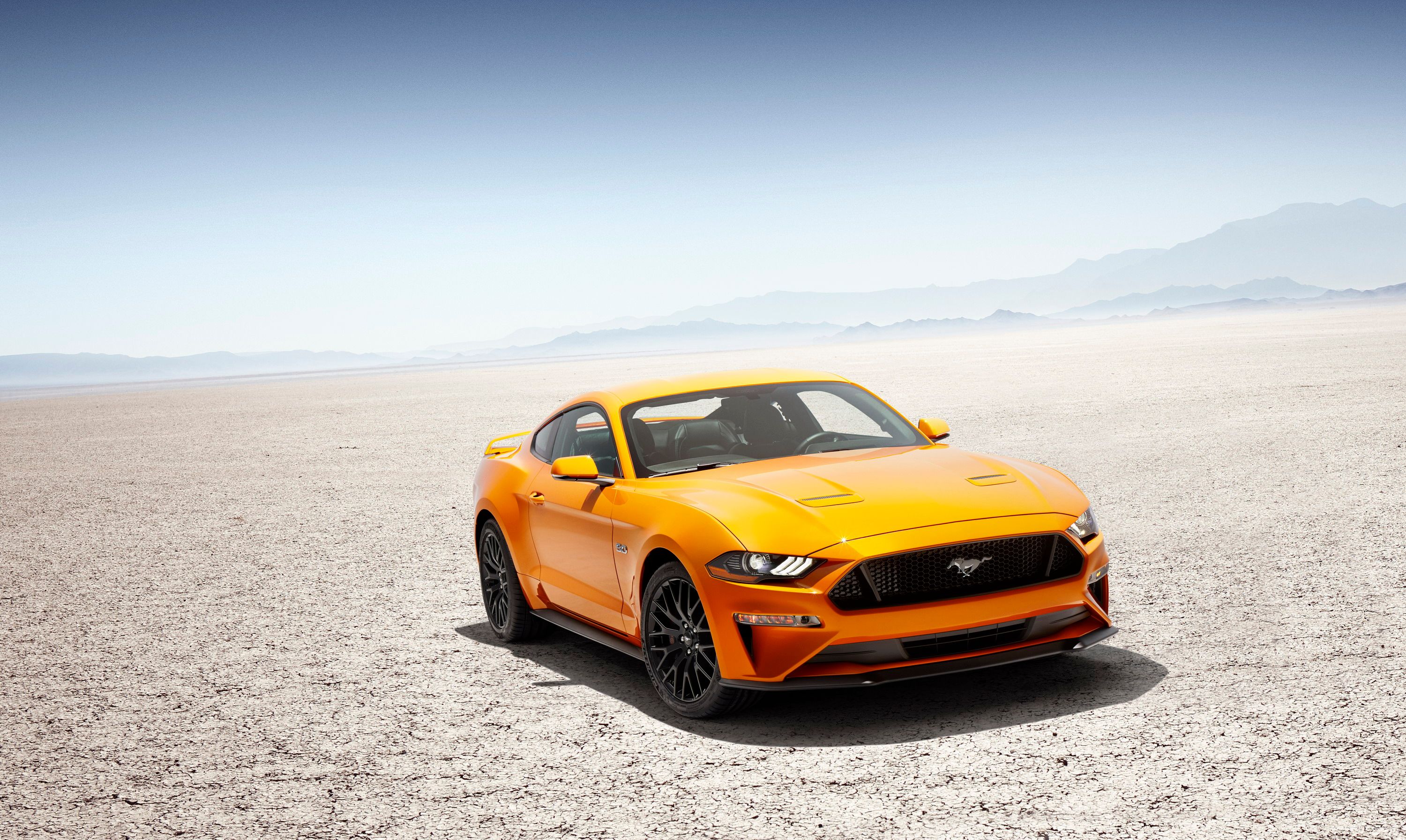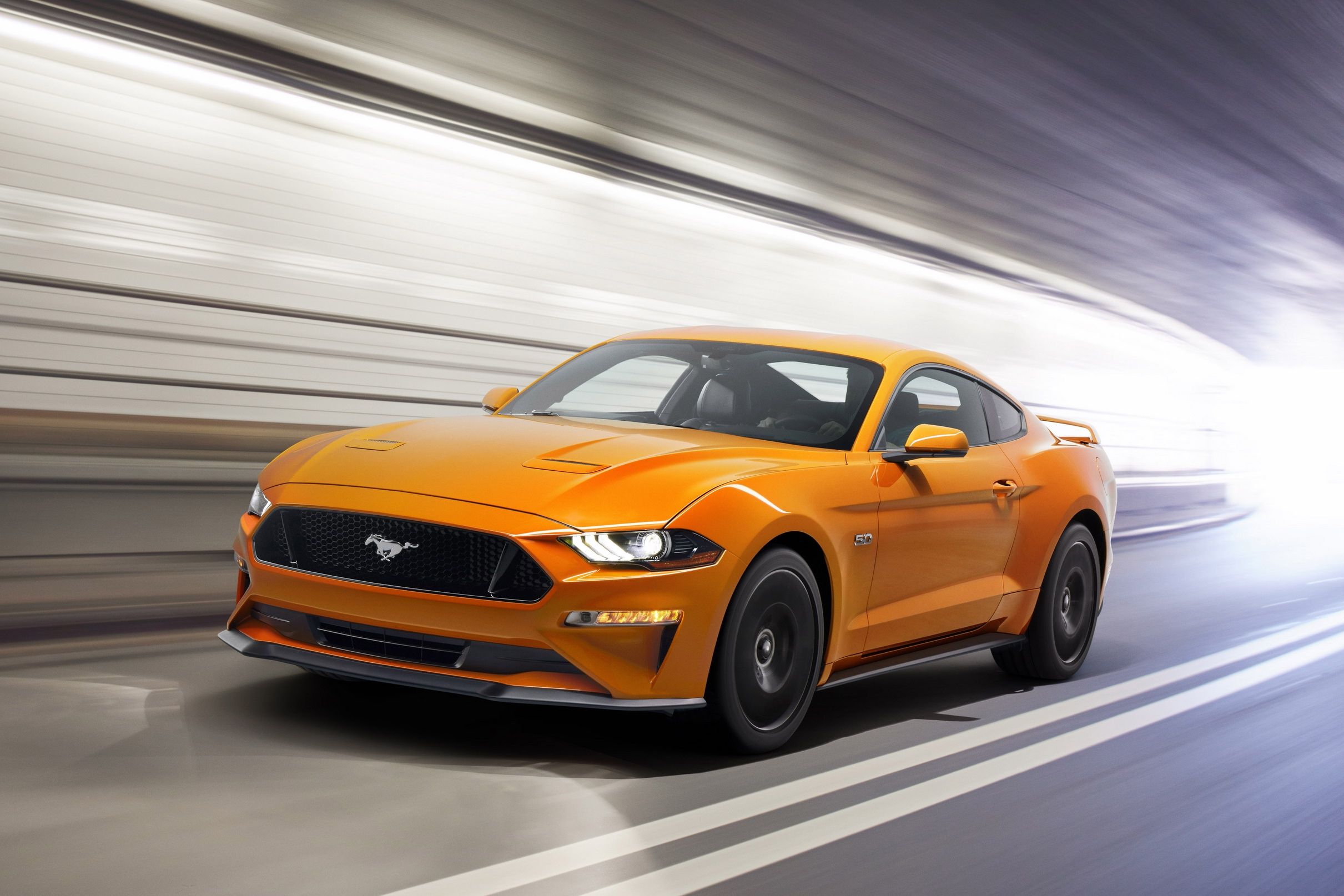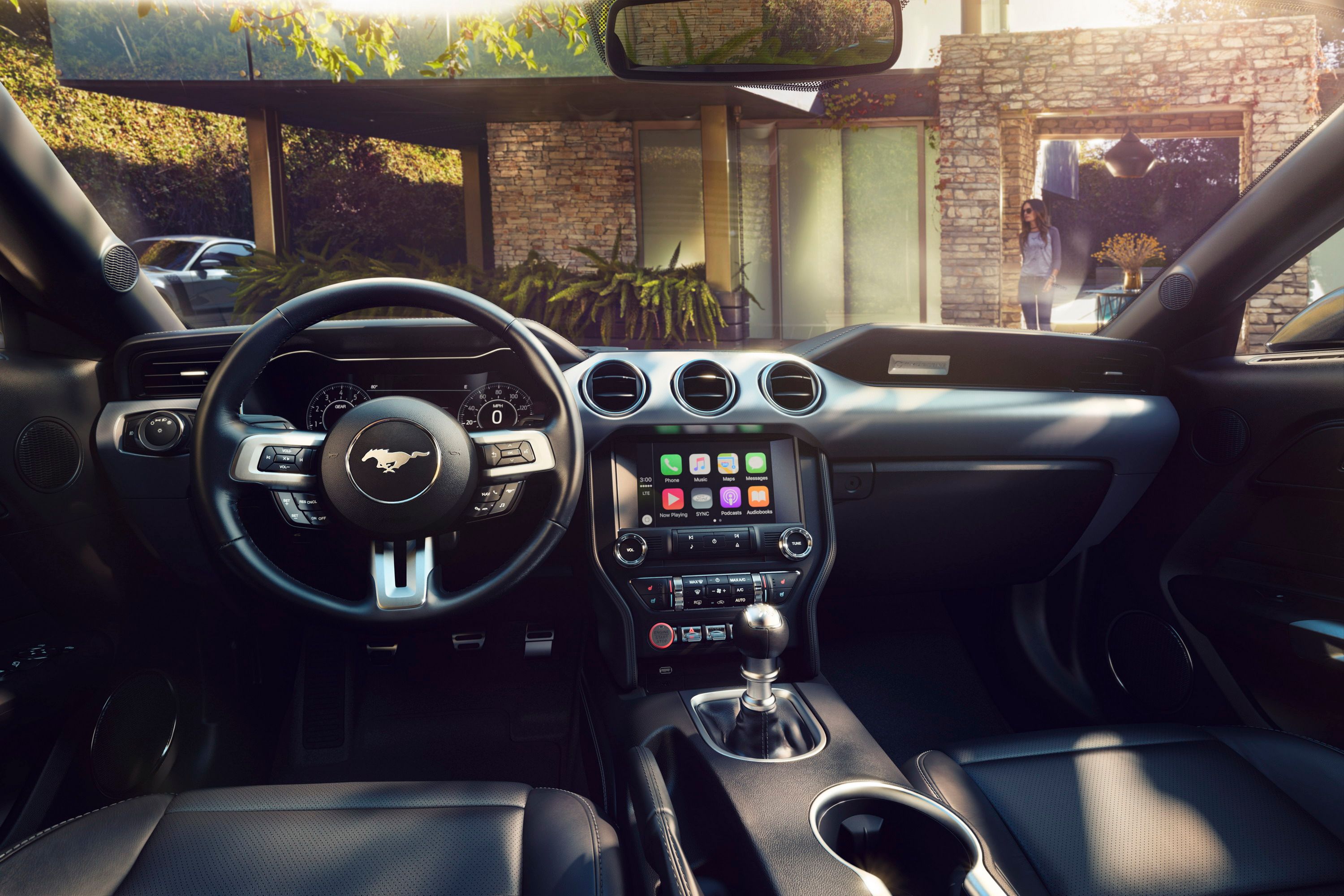Set to break cover later in 2017 for the 2018 model year, the revised sixth-generation Ford Mustang surfaced the Interwebz earlier than planned, after a promotional clip somehow managed to slip online. Only hours after the video gave us a good glimpse at the Mustang's new features, Ford officially launched the facelifted pony car.
Not surprisingly, Ford's design team didn't meddle much with the car's exterior, but I spotted a few significant changes in the front and rear. For starters, the Mustang has a new set of headlamps. The new units are shaped differently toward the fender, with the longer corner now facing downward. At the same time, the triangular turn signal previously placed behind the headlamp has been repositioned below as a long, orange stripe. The triple LED bars toward the grille carry over unchanged, but Ford did create a new main headlamp, adding an LED ring around it.
Down below, you can see that the LED daytime running lights are also new, as are the side vents. The large openings seen on the outgoing model have been replaced by smaller, triangular outlets and I can't make up my mind whether this new feature looks good or not. The center vent is significantly wider now, extending where the previous outlets used to be. The lower vent also has a trapezoidal shape that no longer has the rounded edges of the previous Mustang. The big splitter is still there though. Around back, there are two main features to talk about. Ford revised the taillights, giving the tri-bar design a mild C shape oriented toward the fascia, and added a larger spoiler. The latter isn't standard though, being a cost options on all models. Below, the mildly revised diffuser gets dual-tip exhausts on the EcoBoost model and quad-tip outlets on the GT version.
In case you're wondering why I haven't mention the base V6, it's because Ford dropped the 3.7-liter engine from the lineup.
Ford has yet to release engine specs, but did say that the 2.3-liter EcoBoost gets more torque. The 5.0-liter V-8 also packs more oomph, but we don't know much beyond the fact that it is "more powerful and revs higher than any Mustang GT before." The manual transmission has been upgraded for the four-pot, while the V-8's is a new design that includes a twin-disc clutch and dual-mass flywheel. The 10-speed automatic that Ford announced a while back is available for both engines. Other drivetrain highlights include revised shocks and stabilizer bars, MagneRide, and Michelin Pilot Sport 4 tires included in the optional Performance Package.
Inside, Ford promises softer materials in the more expensive trims, soft padding for the door rollover and knee bolsters, aluminum engine start button, and blue or red accent stitching for the premium seats. Ford also introduced an optional, 12-inch digital instrument cluster and MyMode, a new driving mode that enables drivers to create and save custom settings different than the basic Normal, Sport, and Track modes.
Pricing information and availability is not yet known, but Ford should announce more details soon. Stick around for a few review of the car.
Continue reading for the full story.
Why It Matters
The sixth-generation Mustang received a lot of heat from hardcore fans when it first came to the market, mainly for its exterior design and for adopting an independent rear suspension. Although the suspension hate is a thing of the past, I'm sure that a lot of Mustang enthusiasts won't agree with the revised front end and the new headlamps. But, this is exactly what happens when the popular Mustang gets a facelift or redesign, and while some will hate it, others will like the new design more than the outgoing model. We still need more information about performance before we can draw a conclusion, but based on the preliminary data, the new Mustang should be quicker than it's predecessor and a better competitor to the Chevrolet Camaro.
Comparison: New Mustang vs Old Mustang




